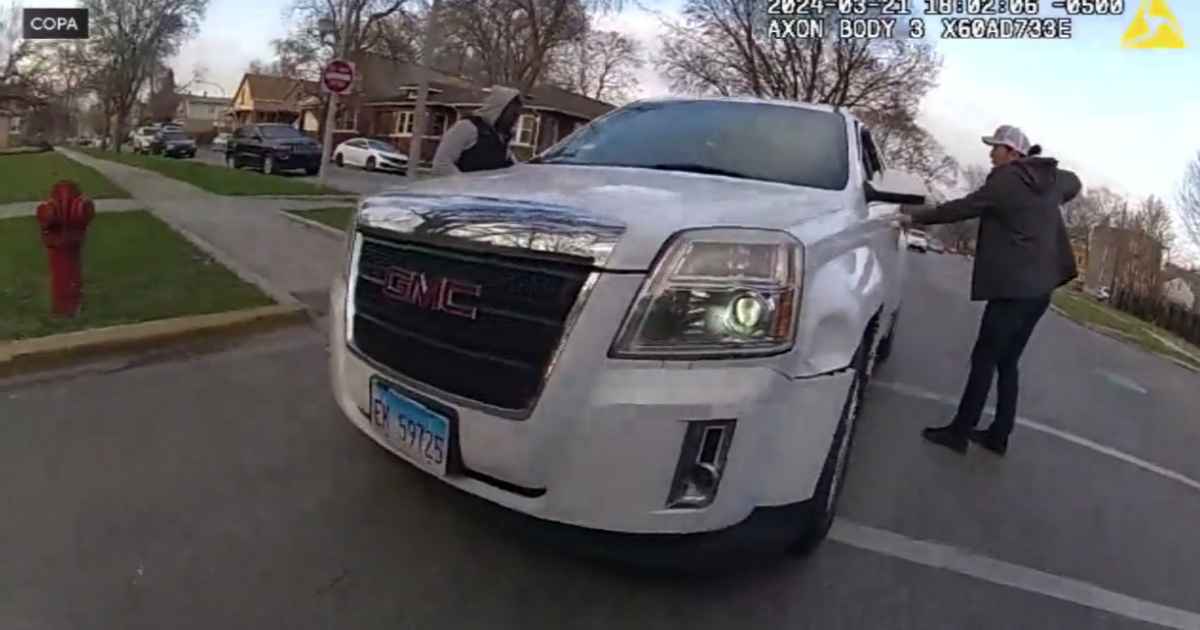Some Improvement Seen After CPD 'Flooded' Violent Beats With Officers As Summer Safety Strategy, Overall Crime Figures Remain Grim In Affected Communities
CHICAGO (CBS) -- Chicago's violent streak is sparking outrage in the city's neighborhoods and drawing attention around the country.
But what about the efforts city leaders laid out at the start of summer to "flood the zone" of violent neighborhoods with police presence and using parts of government in new ways to curb crime? CBS 2's Chris Tye on Monday dug into the promises made - and the report card that is now complete on summer 2021.
Mayor Lori Lightfoot and police Supt. David Brown created a list of 15 beats - subsets of police districts - and put them under the white-hot summer spotlight.
As we have reported time and again, violence this summer is blowing past 2020 and 2019 numbers. And while there are slivers of hope as some of those 15 police beats have seen improvements, overall, the numbers remain grim.
Back on May 28, Mayor Lightfoot said, "We look forward to having the safest summer in the history of Chicago."
The words conveyed high hopes and grand plans from the mayor and police superintendent back on the Friday of Memorial Day Weekend.
Brown explained that police planned to use "data-informed policing to identify areas of hard crime," and use "smart policing technology.'
They were planning to flood the zone with police presence inside those 15 most violent police beats. They are located in four community areas on the West Side – Humboldt Park, East Garfield Park, Lawndale, and Austin; and five on the South Side – Greater Grand Crossing, South Shore, South Chicago, Auburn Gresham, and Roseland.
That plan, along with what was called a "whole-of-government approach" also using the Chicago Public Library and Park District to keep the summer peace, kicked off as summer began.
Now that Labor Day is over, how does CPD grade it?
"It has to be really fully re-evaluated as a whole, but for right now we are confident we are on the right approach," said Chicago Police First Deputy Supt. Eric Carter. "We may have to fine tune some things. Other than that, it was a sound plan put in place."
But was it a "sound plan?" We dug into the numbers in the Chicago community areas and found a very mixed bag.
Shootings in East Garfield Park are up 86 percent over 2020. In Greater Grand Crossing, they are up 58 percent, and in Chicago Lawn, they are up 27.
But there were sharp positive trends too.
In Chatham, shootings were down 44 percent, in South Lawndale or Little Village 35 percent, and in Auburn Gresham, summer shootings were down 25 percent over last year.
Of the 15 neighborhoods designated for a "flood" of police presence, six saw a 10 percent or more drop. But all 15 saw a jump in shootings as compared to the pre-pandemic summer of 2019.
Neither the city nor CPD offered a list of exactly which 15 police beats in those neighborhoods were selected for intense monitoring. So on Monday we filed a Freedom of Information Act request to obtain that list.
When we receive it, we will report it.
Meanwhile, the summer is over, so is the same approach going to continue and will police go on zeroing in and "flooding the zone" inside those 15 beats?
First Deputy Supt. Carter said the approach will indeed continue. He also said as some beats get better numbers, they may fall off that last of 15 – while new beats will shuffle in.
Overall, Carter says police view this approach as a "success."



